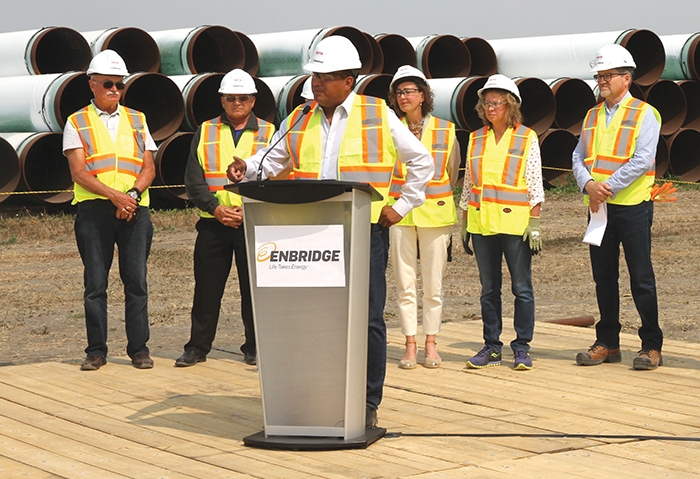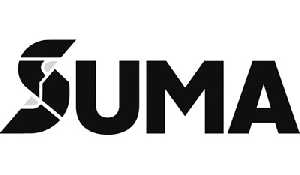Saudi dispute revives talk of Energy East
August 25, 2018, 9:35 am
Kevin Weedmark


Canada’s opposition leader says Ottawa’s escalating diplomatic dispute with Saudi Arabia over human rights is an opportunity to become more energy independent.
Conservative leader Andrew Scheer says the dispute with Saudi Arabia, from which oil is imported to Eastern Canadian refineries, is an example of why we need to get the conversation around energy independence going again—and source a replacement for Saudi oil.
“We continue as a country to purchase large amounts of oil, which supports the Saudi regime,” says Scheer. “We don’t believe that should continue.” Instead, he says Canada should look again at construction of the Energy East pipeline.
“We don’t have an alternative to foreign oil in many Eastern markets,” he says. “That being said, a signal that this government would invite Energy East back to the table could do a lot in the medium and long term. I don’t expect that will happen, the Liberals killed that purposefully.”
Scheer, however, says the government’s insistence that Saudi Arabia release jailed civil rights activists is appropriate, adding Canada should continue to stand up for human rights around the world.
He says the Conservatives are willing to work with the government to resolve this, noting his shadow minister for foreign affairs has been in touch with foreign affairs minister Chrystia Freeland on what the next steps will be.
Between 2007 and 2017, Statistics Canada figures show that Canada imported a total of $20.9 billion of Saudi Arabian petroleum oils. For context, this is almost precisely what Canada spends on its military per year.
It’s also way more than the expected $15.7 billion cost of the Energy East pipeline.
On average, in recent years, Saudi Arabia supplies about 10 per cent of Canada’s oil imports.
Canada, in turn, is responsible for buying roughly 1.5 per cent of total Saudi oil exports.
Saudi Arabia has become a more important source of foreign oil for Canada in recent years.
As recently as 2010, Saudi Arabia ranked as Canada’s fifth largest supplier of foreign oil (behind Algeria, Norway, the U.K. and Kazakhstan). Now, Saudi Arabia is second only to the United States.
All of the Saudi oil imported into Canada in 2017 and 2018 came through New Brunswick, which only has one oil import facility: The massive Irving Oil-owned Saint John refinery.
Between January and June of this year that refinery has imported $1.8 billion of Saudi oil—roughly $10 million per day. The amount of U.S. oil entering the refinery, for comparison, is equivalent only to about $3.8 million per day.
Unlike most Canadian refineries, Saint John has no access to a pipeline; every barrel of oil it processes either comes by tanker or train.
(The oil train that caused the Lac-Mégantic rail disaster, in fact, was headed to the Saint John refinery).
“We source crude oil from all over the world for our refinery in Saint John, N.B.,” a spokesman for Irving Oil said. And whenever someone is seeking out oil from the world market, it’s not unusual that a lot of it is going to come from oil-rich Saudi Arabia.
While Canada imports foreign oil at world prices, it exports much more oil to the United States at discounted prices.
On paper, Canada could become energy self-sufficient tomorrow.
Every day Canada produces about 3.9 million barrels of oil, and uses less than 2 million barrels.
A study this year from the Canadian Energy Research Institute even calculated that energy self-sufficiency might reduce emissions.
University of Calgary professor and Suncor Energy chair Harrie Vredenburg has been raising the question for years, even before the Energy East Pipeline debate got into full swing in 2014.
“Had the Energy East pipeline gone through a couple of years ago, and not been blocked by Quebec, then the oil would, if not be completely flowing by now, it would be very close to flowing from Alberta,” Vredenburg said.
The project was shut down by TransCanada last year. It would have seen an estimated one million barrels of oil flowing each day from the western provinces to the east by converting an existing natural-gas pipeline into an oil pipe. The infrastructure has been transporting natural gas for decades, he said.
Vredenburg said he was puzzled by the cancellation.
He said if Canada stopped producing oil, the country would have to be supplied by regimes like Saudi Arabia, which has a history of human-rights abuses, he said.
Vredenburg related the situation to consumers’ aversion to “blood diamonds”—minerals procured through rebel or security-force activity in parts of Africa that may perpetrate human-rights abuses.
Back in 2014, Parliament began debating the Conflict Minerals Act, which required Canadian companies to practise due diligence in the mineral trade. The act was eventually defeated, but Vredenburg said it sparked a desire among Canadian consumers for ethically sourced diamonds. Local businesses reacted, he said, and as a result “the Canadian diamond industry is now seen as an exemplary industry as having the best human rights.”
Canada could seize this opportunity to build more infrastructure, becoming a country the world could rely on for ethical oil, said Vredenburg.
“It makes a lot of sense for Canada to take control of its own destiny and say, ‘We’re not going to be at the whim of the crown prince of Saudi Arabia and we will use our own oil,” he said.
Many environmentalists argue that Canada should wean itself off oil completely, but Vredenburg counters that won’t happen. Instead, Canadians should pressure oil companies to produce cleaner energy, he said.
If oil production were to be halted, “that oil would be supplied from other less attractive places than Canada,” he said.
Click here to see Kevin Weedmark's Column on Energy East



































